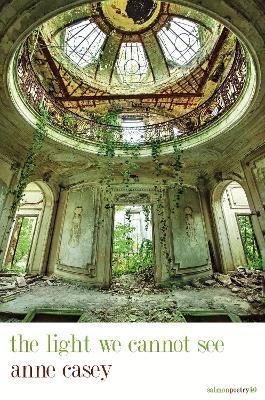The Light We Cannot See
Irish-born poet Anne Casey presents us with a study in contrasts in her latest book, The Light We Cannot See (Salmon Poetry 2019). In the pandemic that has locked down Australia for most of the past two years, Casey reflects on the distortions of life as it is. In erudite lyrics, she comments on the present moment, then moves to timeless topics – sometimes in the same poem.
In Out of the mouths of babes, Casey shares her son’s question: “Why do they name hurricanes after people Mum?” In terse, simple stanzas, she ponders the response she does not share with him:
Because people come swinging
at you out of nowhere, relenting
only to catch you again with their rage.
Because people are all drifts—
capable of enormous cruelty
only to disappear in its wake.
Because things are so often
named after their creators—
look at all we have made for you.
Clear, immediate, tightly paced, this poem speaks of contemporary pain in a minor key. Yet, this is not the only color group in Casey’s palette. She is as comfortable with soaring images, finely wrought symbols, and classical allusions. She plays with space and sound, as in Season of Brigid, in which she spins an open-weave song to the Irish saint, dazzling the reader both visually and aurally. She challenges readers with One minute to midnight, a dirge, completely contemporary in form, drawing on classical references to intensify the writer’s grieving. The poem is both revealed and disguised by its circular shape and idiosyncratic format.
In Like Hesperus o’er the western sea, Casey reaches for a romantic ancestor, moving the action into a parked hatchback, as she watches the western sea, much as Shelley might have. Surviving the wild sea is mellowed to a family outing, the Queen Mab’s court replaced by the life and death struggle of a cormorant and an eel.
In A Terrible Beauty, Casey channels Yeats’ Easter 1916, stuffing that literally revolutionary moment into a standoff, not between rebels and troops, but a more mundane standoff - woman versus insect:
Breathing the same
cubic centimetres of air—
his navy eyes holding
mine and mysteries
i will never fathom—
two sentient beings
regarding each other
through a flimsy metal screen.
Casey urges the reader to seek the monumental in the minute. It is a failing of humans that, when living besides events of great importance, we often react as if such things were only personal. On September 11, 2001, I had planned to meet someone for breakfast in the World Trade Center, but a conference had booked the space. Over a dozen friends and acquaintances, and thousands of strangers died that day, yet my memories are inextricably bound in that tiny, personal fact.
So it is with the pandemic. No one can predict the future perfectly, but it is clear that the pandemic has upended “normal life.” What will we remember? The loss of a loved one? Or the nuisance of having to mask?
Casey deems her work in this book a reaction to the COVID-19 pandemic – certainly appropriate. Yet, unlike the passing inconvenience, she paints on a larger canvas, with a timeless quality that surpasses the here and now. She sculpts her personal moments with language and imagery worth of the event. It is a rare feat, and one worth experiencing.
D Ferrara
D Ferrara, co-founder of San Fedele Press, is editor of American Writers Review, Art in the Time of COVID-19, and Jewels of San Fedele. Her fiction and nonfiction have been published widely, and her award-winning dramatic work has been produced internationally.


